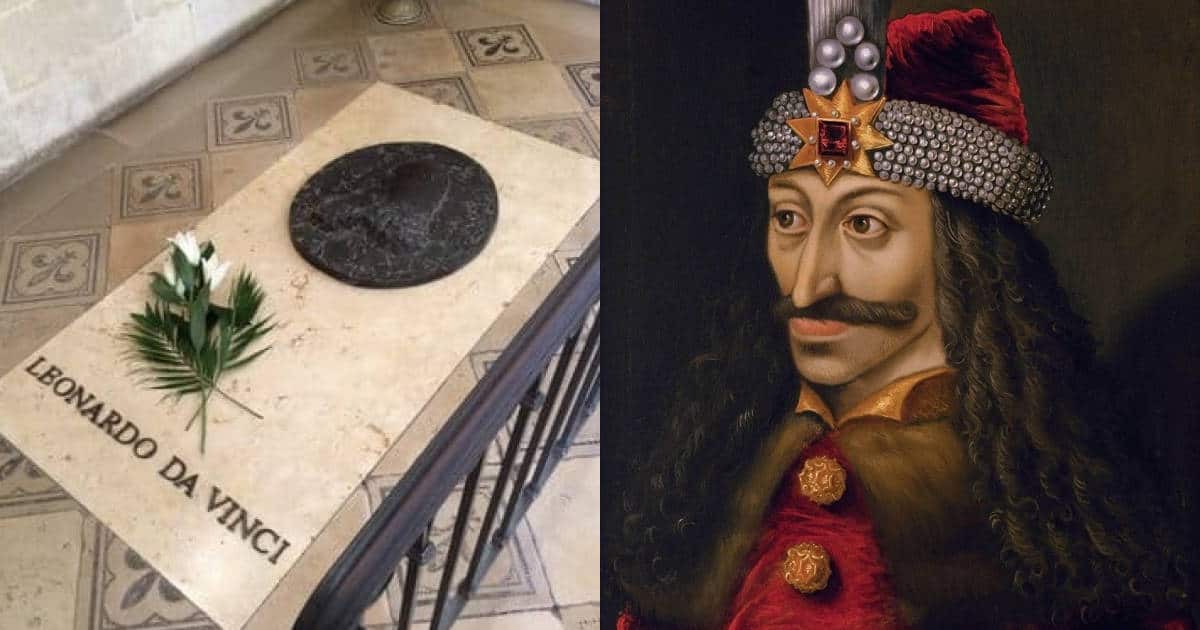The graves of famous figures from history often serve as places of pilgrimage. Millions of tourists a year flock to pay their respects to Oscar Wilde in Paris, for example, or visit the Arlington National Cemetery simply to stand silently by JFK’s final resting place for a while. Indeed, even hundreds of years after their deaths, some famous figures still get flowers on their graves. But what about those historical figures whose ultimate whereabouts is unknown? In some cases, there may be contested graves, places where their admirers can visit in the hope that their idol is indeed the person lying beneath their feet. Or sometimes there’s not even a possible resting site, just a great, unsolved mystery.
The discovery of King Richard III of England under a car park in the city of Leicester showed that, sometimes bodies do get found, even hundreds of years after they went missing. That’s why amateur archaeologists as well as professional academics are still following the clues and trying to find the final resting places of numerous historical figures. At the same time, however, some cases appear hopeless. However, much we might hope to solve these historical puzzles, sometimes people just don’t want to be found.
And so, here are just 10 examples of historical figures whose final resting place remains either unknown or contested:

Wolfgang Amadeus Mozart
In the music world, the word ‘genius’ is bandied about perhaps a bit too easily. But there can no disputing that, when it comes to Wolfgang Amadeus Mozart, it’s a completely accurate term. Born in the Austrian city of Salzburg in 1756, he was famously composing tunes and performing to the upper echelons of society from an early age. During the 35 years of his short life, Mozart composed operas, symphonies and concertos, gaining celebrity status and earning a small fortune. Surely such a true genius would be buried in an elaborate grave? Think again.
In September of 1791, Mozart was in Prague to celebrate the premier of one of his lesser-known operas. He fell ill and his condition swiftly deteriorated. Though he was mentally able to carry on composing – he even tried to finish his own Requiem while on his death bed in Vienna – his body gave up the fight. He died on 5 December 1791. What happened next is something of a mystery.
Some accounts mistakenly say that Mozart was buried in a ‘common grave’. While this is half-true, It’s wrong to assume that his final resting place was a pauper’s grave. Rather, he was buried in St Marx Cemetery, just outside the centre of Vienna, in what was then known as a grave for common people – that is, someone who was not a member of the aristocracy. Notably, while aristocrats were indeed left to rest in peace, the bodies of people from the lower classes were not. In fact, they were liable to be dug up and moved after ten years. Even if they were left in place, they were left unmarked.
Shortly after his death, the people of Vienna realised they might have been a little too hasty and disrespectful to their most famous son. A group of gentlemen decided to locate Mozart’s grave and erect a fitting memorial. Using old documents, they found the spot they believed to be the composer’s final resting place and then got Hanns Gasser to design an elaborate memorial stone. It’s to this spot that tourists come to pay their respects today. The problem is, however, that nobody can say for certain that Mozart himself is lying in that spot. Sure, he’s in the St. Marx Cemetery. But whereabouts exactly? Like the man and his music himself, that continues to be the source of much fascination and debate.

